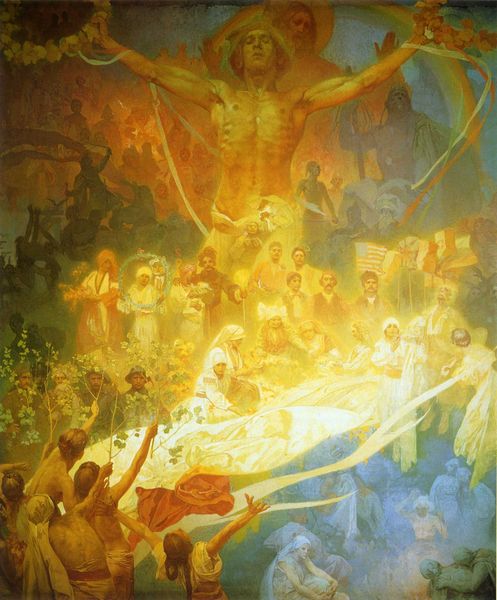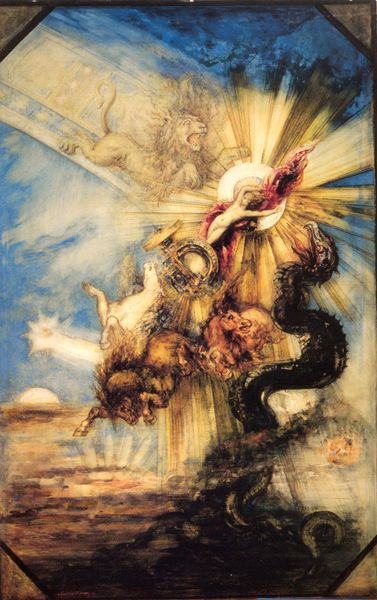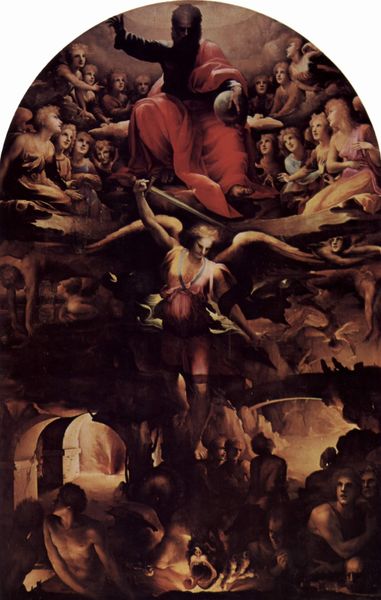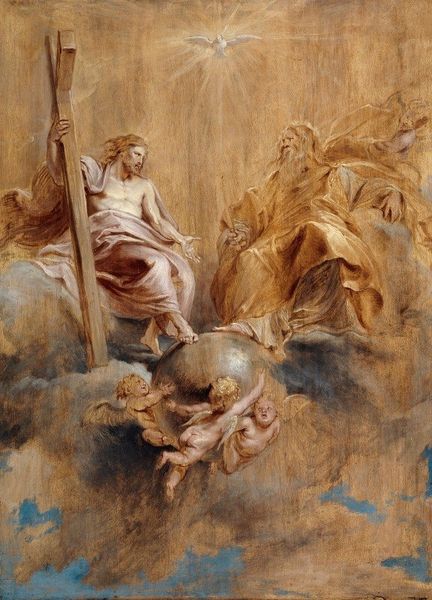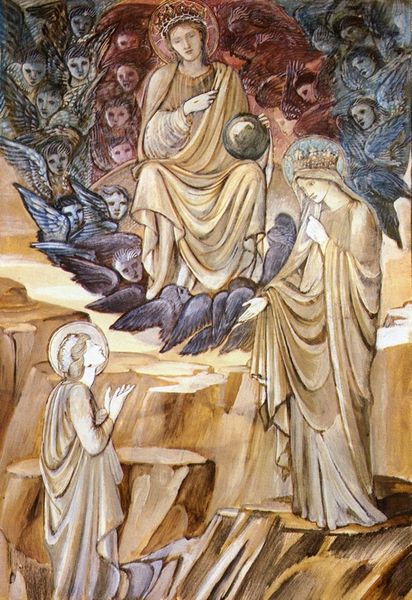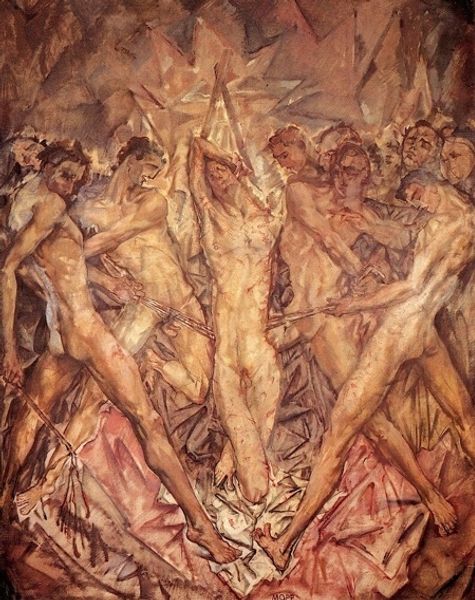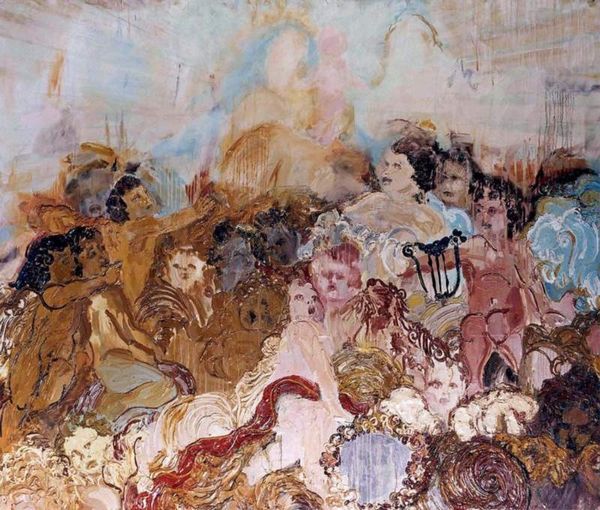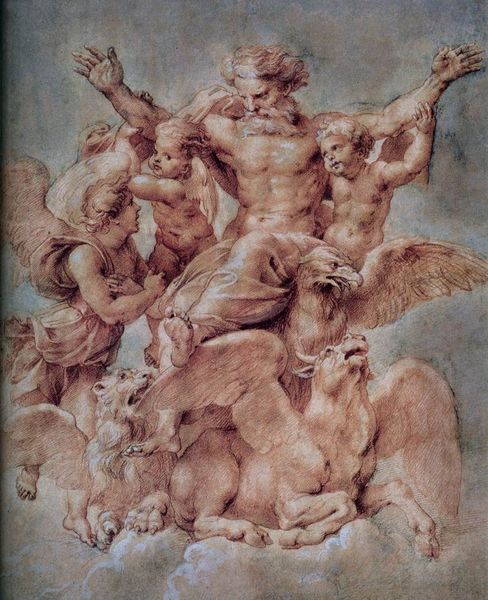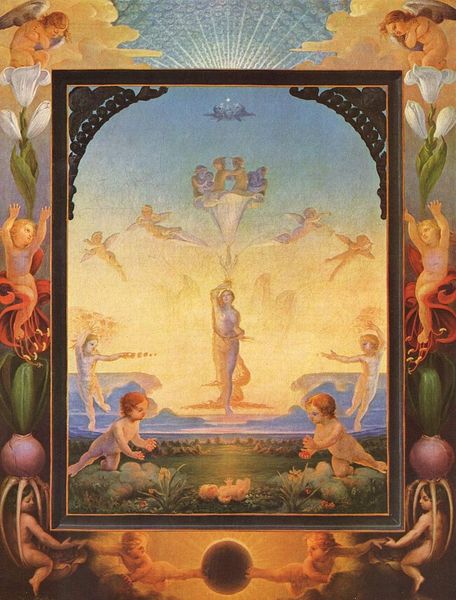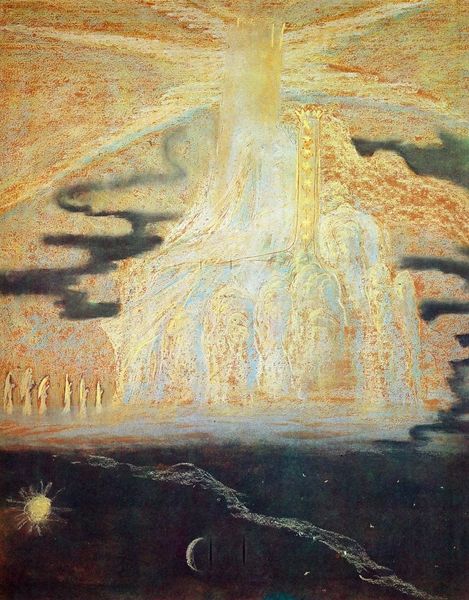
tempera, painting, fresco
#
byzantine-art
#
medieval
#
tempera
#
painting
#
figuration
#
fresco
#
jesus-christ
#
christianity
#
crucifixion
#
history-painting
#
italian-renaissance
#
mixed media
#
watercolor
#
christ
Dimensions: 360 x 690 cm
Copyright: Public domain
Cimabue painted this fresco of the crucifixion in the late 13th century, here in the Basilica of Saint Francis in Assisi, Italy. It is an image that seeks to communicate the redemptive power of Christ’s sacrifice. It draws on the religious culture of its time, reinforcing established beliefs about sin, salvation, and the divine order. Yet, it does so through a relatively new artistic style that humanizes the scene. Consider the weeping angels, or the grief-stricken mourners. Art historians analyze such works by examining not only the formal qualities of the art, such as Cimabue's use of line and space, but also by studying theological texts, the history of the Franciscan order, and the social context of religious belief in medieval Italy. By understanding the cultural and institutional forces at play, we gain insight into the complex meanings this image held for its original audience.
Comments
No comments
Be the first to comment and join the conversation on the ultimate creative platform.
